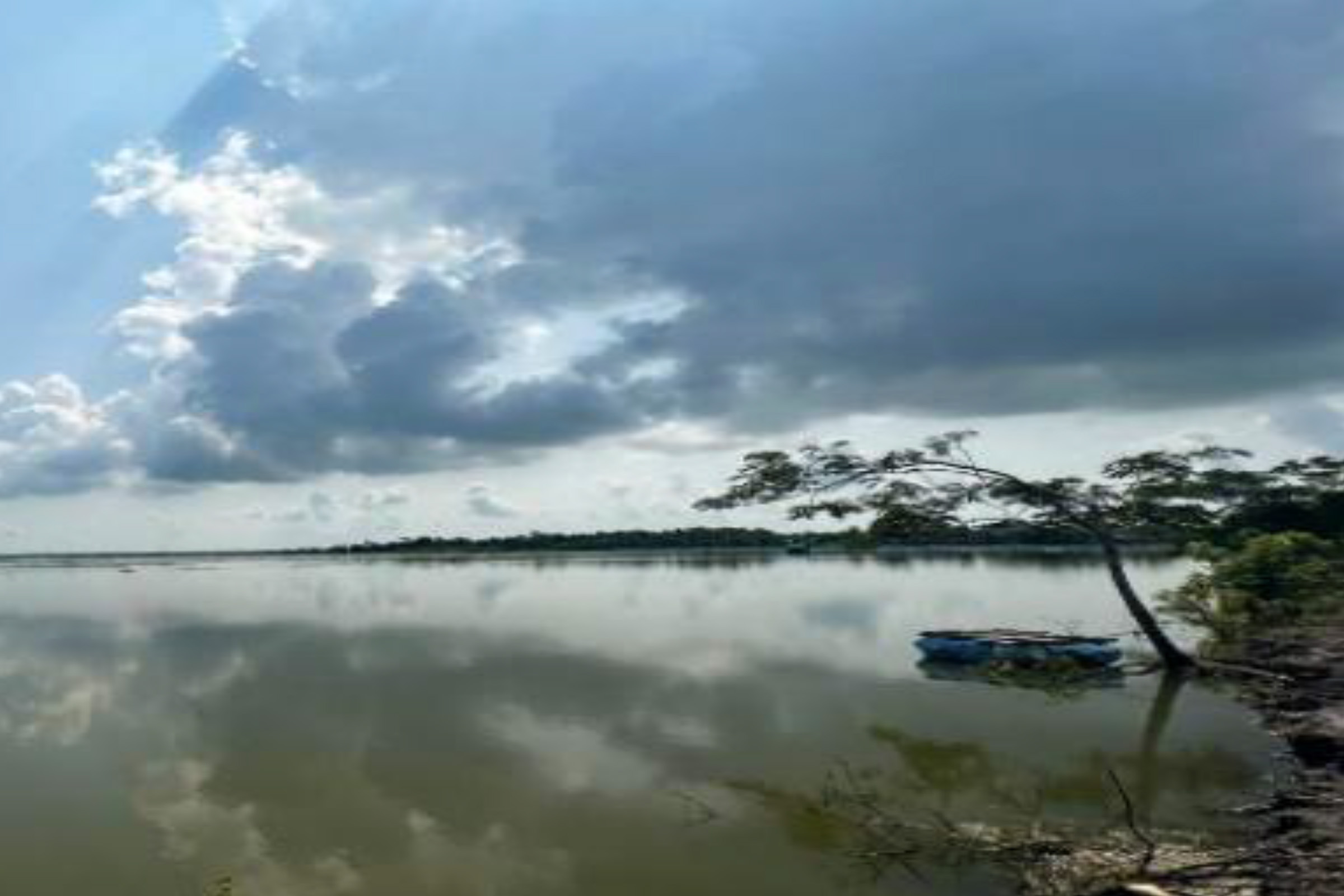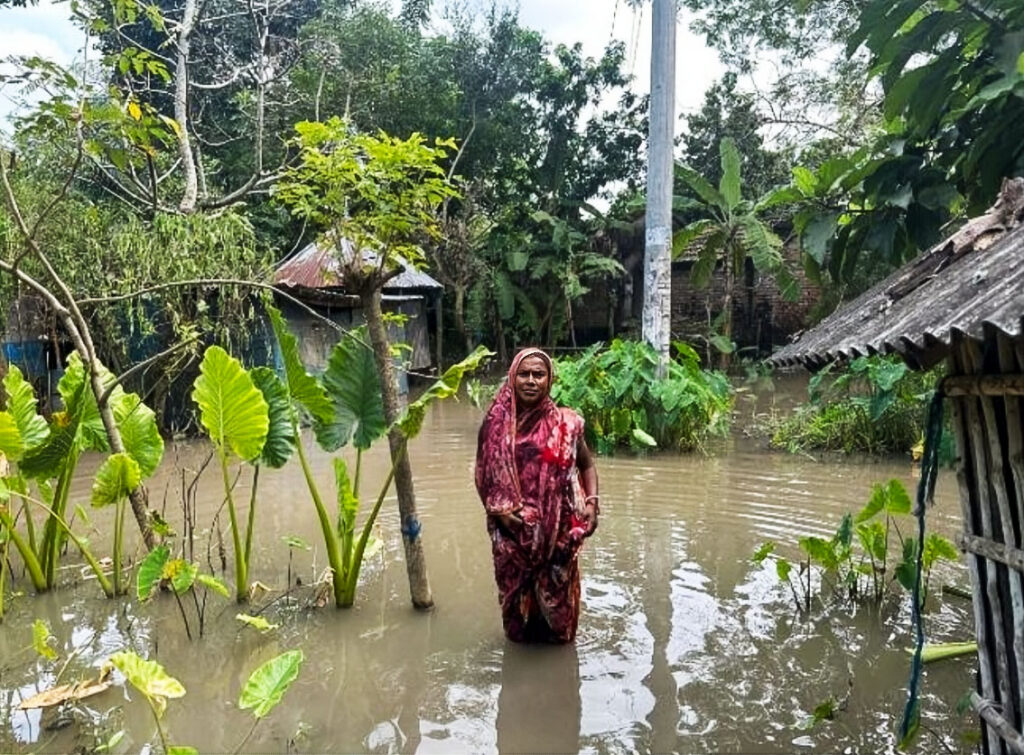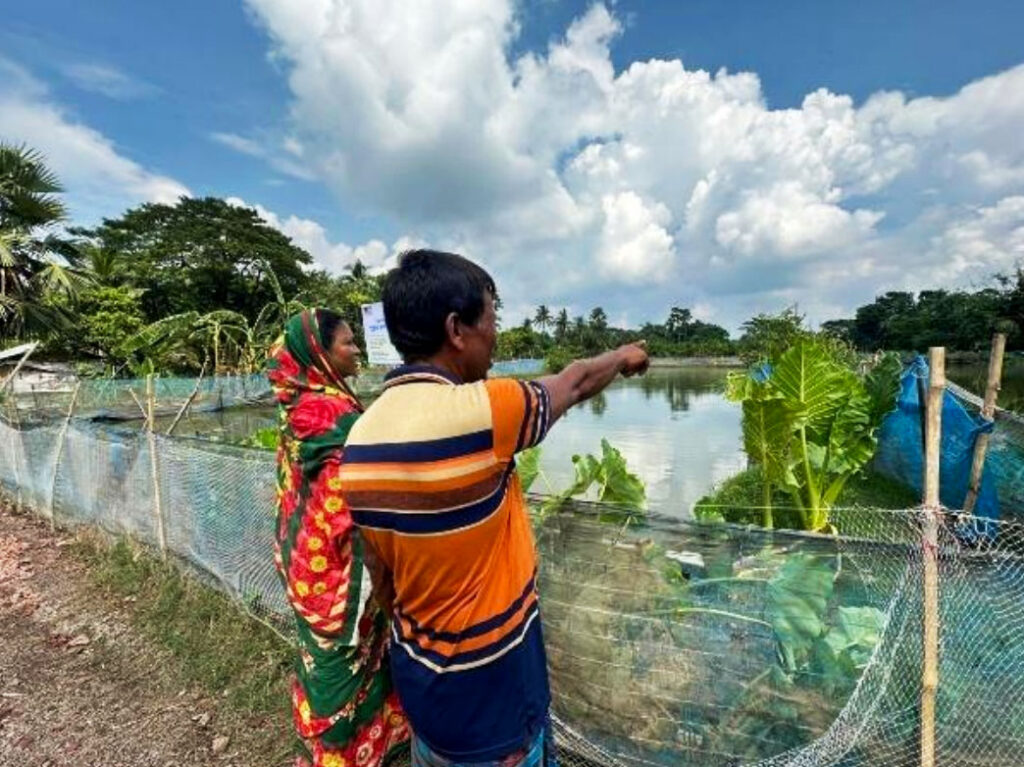
Resource
Resilient Farming: Satkhira Fish Farmers Embracing Sustainable Practices to Mitigate Flood Impacts
In 2024, Bangladesh experienced several floods across the country. One such instance
occurred in September of this year when continuous rainfall over the course of four
days and the breach of an embankment of the Betna River at Satkhira caused a sudden
flood. As a result, at least fifty villages in three unions across two upazilas were flooded.
All told, 6,000 gher (fish enclosures) and 1,500 ponds have been swept away, while
fields of Aman rice, Aush rice, and various vegetables have been flooded. Additionally,
Satkhira’s fisheries and agricultural industries have sustained damage that was
estimated to be worth BDT 700 crore (around USD 60 million).1 This flood had occurred
for the first time in 13 years, due in large part to the unplanned dredging of the Betna
River, which caused the embankment to break down and flood the entire land
overnight.2 This has left Satkhira’s villagers marooned for over two months.
With Satkhira situated on the southwestern coastline of Bangladesh, it is especially
susceptible to the effects of climate change. This area is situated near the Bay of Bengal
and borders the Sundarbans, the largest mangrove forest in the world. The landscape
of Satkhira is characterized by low-lying, marshy terrain interspersed with rivers, canals,
and tidal floodplains, rendering it particularly vulnerable to environmental hazards.
Major climate risks to the settlements of Satkhira include recurrent cyclones, tidal
surges, monsoon floods, water logging, and saline water intrusion. The increasing
salinity in soil and water has been diminishing agricultural output and jeopardizing
freshwater resources, including freshwater aquaculture. Villagers of this region,
especially in Satkhira, encounter monsoon floods that inundate the land for prolonged
durations and impair agriculture as well as aquaculture farming practices on an almost
annual basis. Consequently, livelihoods that are predominantly dependent on
aquaculture face perpetual threats.
In keeping with its coastal identity, Satkhira is a region renowned for its extensive
freshwater fish farming and shrimp cultivation activities, which support the livelihoods
of numerous families. In recent years, however, these approaches have become
increasingly confronted by environmental issues, such as tidal surges or flooding. One
response to this is that, in addition to conventional pond-based fish farming, the
majority of farmers in this region incorporate aquaculture with agriculture, utilizing the
water from fishponds to irrigate their crops, and practice integrated farming in the form
of climate smart agriculture-aquaculture practice. In Bangladesh, shrimp farming
encompasses a significant expanse, with estimates indicating that over 1.5 million
hectares are allocated to shrimp aquaculture across the country. This should come as
no surprise since Satkhira’s landscape is defined by an abundance of coastal lands and
brackish waters that are ideally suited for shrimp farming.3 Unfortunately, this land use
entails vulnerabilities due to cyclone, flood, and other threats.
“All of a sudden, we found water in the household late at night. I woke up with deep
anxiety and hopelessness thinking about how to protect the fish in the gher (enclosed
waterbody for farming fish), and subsequently, we lost all our fish as well as the hope for
a prospective life. All fish were flushed away within a few hours and the entire union
went under water”, said Biswanath Biswas, a villager of South Nagarghata in
Nagarghata union, Tala upazila, Satkhira. Two years back, he invested BDT 400,000
(USD 3,480) in fish farming in a leased gher. However, this investment was arranged
through loans, and he is now faced with the need to pay back the interest on that loan
on top of the loss of his investment. Moreover, Bishwanath lost BDT 40,000 (USD 348)
worth of vegetables that grew at the dike area of the gher when the water level
increased, reaching heights of up to seven feet.
Bishwanath mentioned that he was aware of methods for adapting climate resilient
practices, for example, installing filter nets around the water bodies. He has learned
these new practices and approaches from the monthly village group meetings on
improved aquaculture practices organized by the organization Agrogoti Sangstha as
part of the B-PEMS AugroJatra Climate Change Project. Prior to the flood, he had
installed filter net surrounding his small pond but didn’t invest to protect fish in the
large gher as he didn’t anticipate the water level would increase to such extremes. The
unwillingness happens among the farmers, because by installing filter net around the
large gher to enclose the waterbodies may create an obstruction to the walkways and
the net installed may also hamper the dike vegetation. Now, though, they look forward
to learning alternative techniques to cope with these types of hazards.
As part of its resilience strengthening activities, the B-PEMS AugroJatra Climate
Change Project has been working with farming and fishing communities in climate vulnerable areas to promote improved agricultural and aquaculture practices. The
project is supported by the U.S. Department of State (USDOS) and is being
implemented by Winrock International, along with six partner organizations, including
Agrogoti Sangstha.
In another instance of a community facing increasing climate challenges, this year
around 140 participants of the AugroJatra project from the low-lying areas in Khesda
union, Tala upazila became trapped due to flood induced water logging, as all the
ghers of these households went under water. They were unable to protect their fish
stock, even after installing the filter nets around the boundary of the gher. Due to rising
water levels in an unusual pattern, they were unable to save their fish in their gher this
time, even after installing nets.

ruined her crops and swept away her fish
Furthermore, almost all the families lost their income from dike vegetation, which is one
of the major alternative income sources. “I’m afraid of this prolonged flood as all our
cultivable land is still under water. The water may not drain down before the Boro rice
plantation season – how can we survive in this crisis?”, asked Geeta Biswas. Geeta
invested BDT 27,000 (USD 235) to release fish fingerling at her gher a month back;
however, she lost all her assets as well as vegetables, which cost around BDT 87,000
(USD 757). In addition, she was not even able to fire her stove to cook as both the
kitchen and her house were underwater.
Fortunately, some were able to apply the techniques they had learned to limit their
losses. Nagarghata’s Chinta Mondol (above mentioned Biswanath’s wife) saved more
than 80% of their fish by following the advice to enclose their pond by using filter net.
Conversely, her neighbors who did not use filter net as fencing remain unsure about
whether their fish have been swept from their ponds or not as they await the subsiding
of the flood waters. In addition to highlighting the value of filter net, Chinta’s
participation in the monthly village group meeting on improved aquaculture practices
organized by Agrogoti Sangstha also enlightened her on topics such as the standard stocking density of fingerling, better feed management strategies, how to keep records
for pond activities, and other useful techniques.

fishnet, which saved the fish from being
carried off with the flood
Recently, her pond was selected as a demonstration plot by the AugroJatra project,
which provided inputs to grow fish by following improved practices. Just 15 days before the flood, Chinta installed the filter net for her 40 decimals pond where she used four filter nets. That netting safeguarded her livelihood and provided an example of good practices to the other villagers.
By the numbers, installing the filter net round the pond costs BDT 6,000 (USD 52), and
the net lasts for at least two years. This means, for each culture season, the depreciated
cost for installation of filter net is BDT 3,000—all for an investment that protected her
fish worth BDT 60,000 (USD 522). This goes to show that embracing these types of
adaptive practices is more than just a survival mechanism for aquaculture farmers,
especially those who live in the low-lying flood prone areas like Satkhira and could be
an essential step toward a sustainable and hopeful future.
Although there are significant losses and difficult challenges, learning from Chinta
Mondol’s practice showed that there is a way forward for the farmers who own small
ponds. Small-scale fish farmers may fortify their livelihoods against the inevitable
effects of climate change by embracing low-cost sustainable techniques. The farmers
of large gher, however, are unable to protect their fish from the adverse effect of climate
events and face huge loss. The limitation of this technology needs to be improved.
Author: Nusrat Khan (Communication and Knowledge Management Specialist)
Facilitation: Zahirul Islam (Livelihoods and Skill Development Specialist), Ahmad Ibrahim (Program, Research, and Knowledge Management Advisor), Nasir Chowdhury (Project Director) and Zakia Naznin(Head of Programs and Senior Technical Lead, Climate Change)
1 Satkhira faces 700C loss in fisheries, agriculture| Dhaka Tribune
2 SOS from southwest: Severe waterlogging causes widespread misery in four districts
3 Aquaculture practices in Bangladesh: A synopsis on prospects, productivity, and problems
